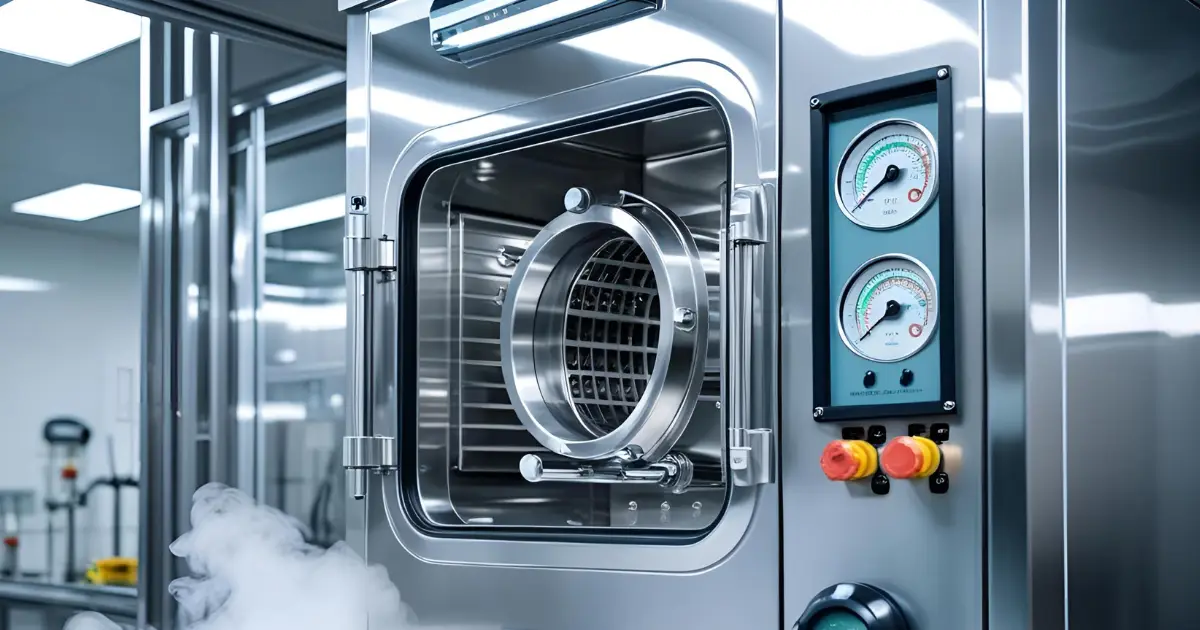Sterilization is a critical process for maintaining hygiene and safety, especially in fields such as healthcare, laboratories, and food processing. Among the most effective and widely used tools for sterilization is the autoclave.
An autoclave is a pressurized device used to sterilize medical instruments, laboratory equipment, and other items by exposing them to high-pressure steam at elevated temperatures.
This process effectively kills harmful microorganisms—such as bacteria, viruses, fungi, and spores—that could otherwise pose serious health risks.
Working Principle of an Autoclave
- Loading: The items to be sterilized (e.g., surgical instruments, laboratory glassware) are placed inside the autoclave chamber.
- Sealing: Once the door is securely closed and sealed, the sterilization cycle begins.
- Steam Generation: The autoclave generates steam at temperatures ranging from 121°C to 134°C (250°F to 273°F) under 15–30 psi pressure. The steam penetrates the materials, effectively killing microorganisms.
- Exposure Time: Items are exposed to the steam for a set period—typically 15 to 30 minutes, depending on the material and temperature setting.
- Cooling and Drying: After sterilization, the pressure is released, and the chamber cools down. Most modern autoclaves include a drying cycle to remove moisture, ensuring the items are ready for safe use.
Benefits of Using an Autoclave
Highly Effective Sterilization
Eliminates up to 99.99% of pathogens, including resilient bacterial spores that other sterilization methods might miss.
Time Efficiency
Typical sterilization cycles take just 15 to 30 minutes, making the process quick and reliable.
Environmentally Friendly
Uses only steam and pressure—no harmful chemicals—making it a sustainable and eco-friendly method with minimal waste.
Areas of Application
- Healthcare: Hospitals, clinics, dental practices
- Laboratories: Research, clinical, and educational settings
- Food Industry: Equipment and packaging sterilization
- Pharmaceuticals: Sterile processing and manufacturing environments




